- Childhood experiences: Early childhood experiences play a crucial role in shaping a person's attachment style and their beliefs about relationships. If a child experiences neglect, rejection, or inconsistent care from primary caregivers, it can create deep emotional wounds related to abandonment.
- Loss of a significant relationship: The loss of a loved one through death, divorce, or separation can also contribute to an abandonment wound. This loss can trigger feelings of rejection, loneliness, and fear of being left alone.
- Repeated experiences of rejection: When someone faces repeated experiences of rejection, whether in romantic relationships, friendships, or social settings, it can reinforce the belief that they are unworthy of love and support. These experiences can create a fear of abandonment and a reluctance to trust others.
- Traumatic events: Traumatic events, such as abuse, neglect, or abandonment itself, can leave deep emotional scars. These events can create a profound fear of being abandoned or betrayed again, leading to a heightened sensitivity to potential abandonment triggers.
- Unresolved childhood issues: If childhood wounds and unresolved emotional issues are not addressed or healed, they can continue to affect a person's adult relationships. Unresolved abandonment wounds from childhood can resurface and impact future relationships, leading to fear and insecurity.
It's important to note that each person's experiences and wounds are unique, and the creation of an abandonment wound can vary from individual to individual. Understanding the underlying causes and seeking support through therapy or counseling can help address and heal these wounds.
Signs of an Abandonment Wound
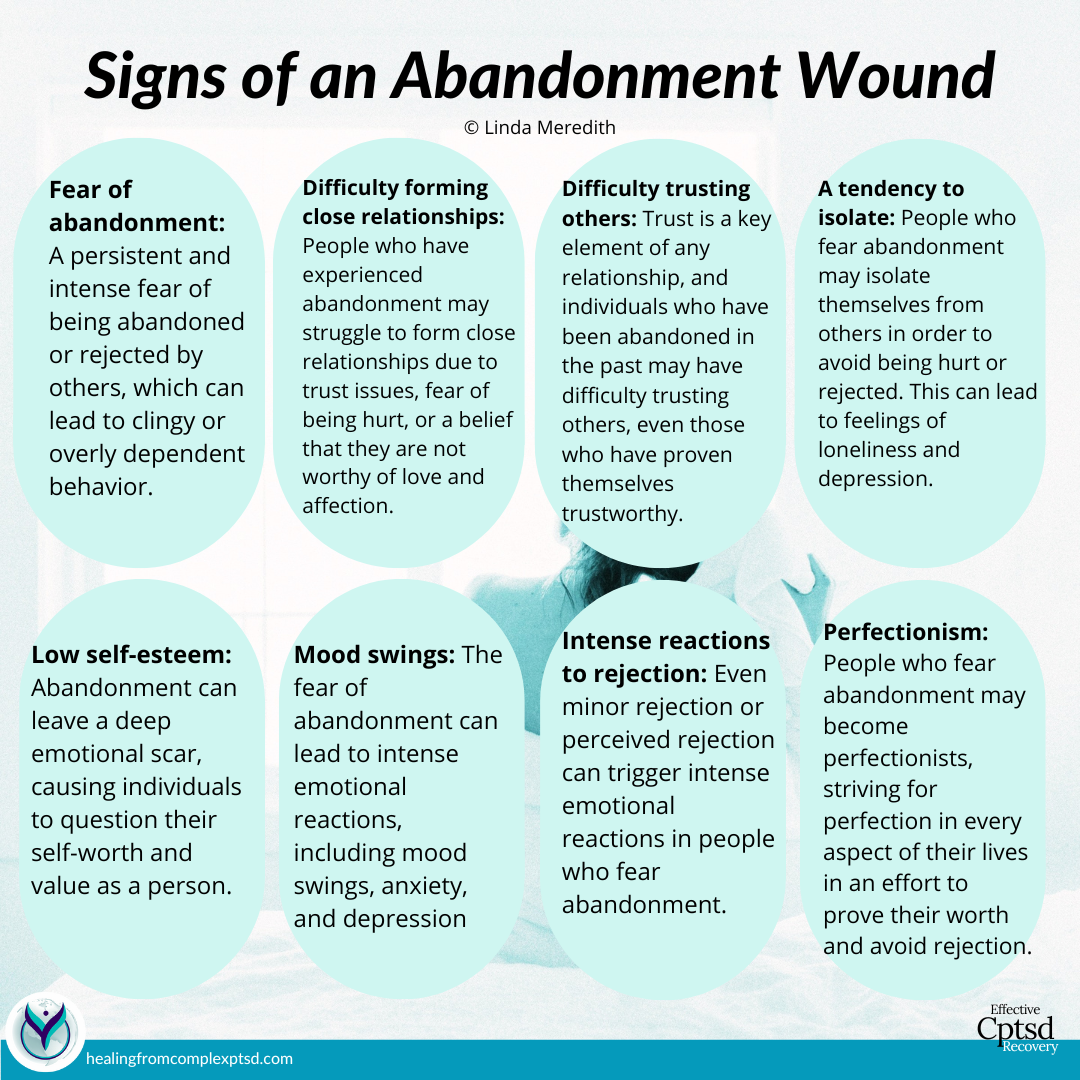
10 Ways to recognise an abandonment wound
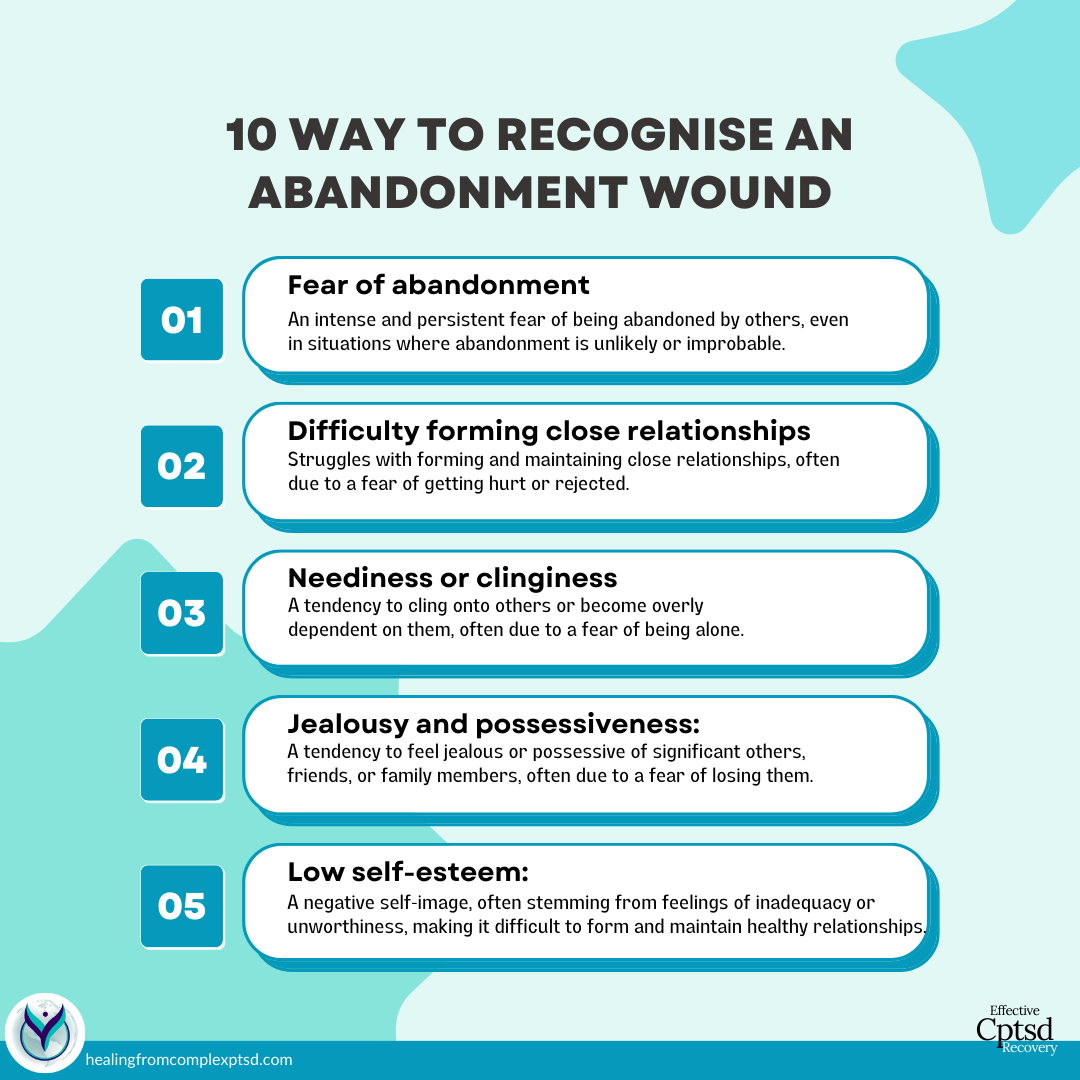
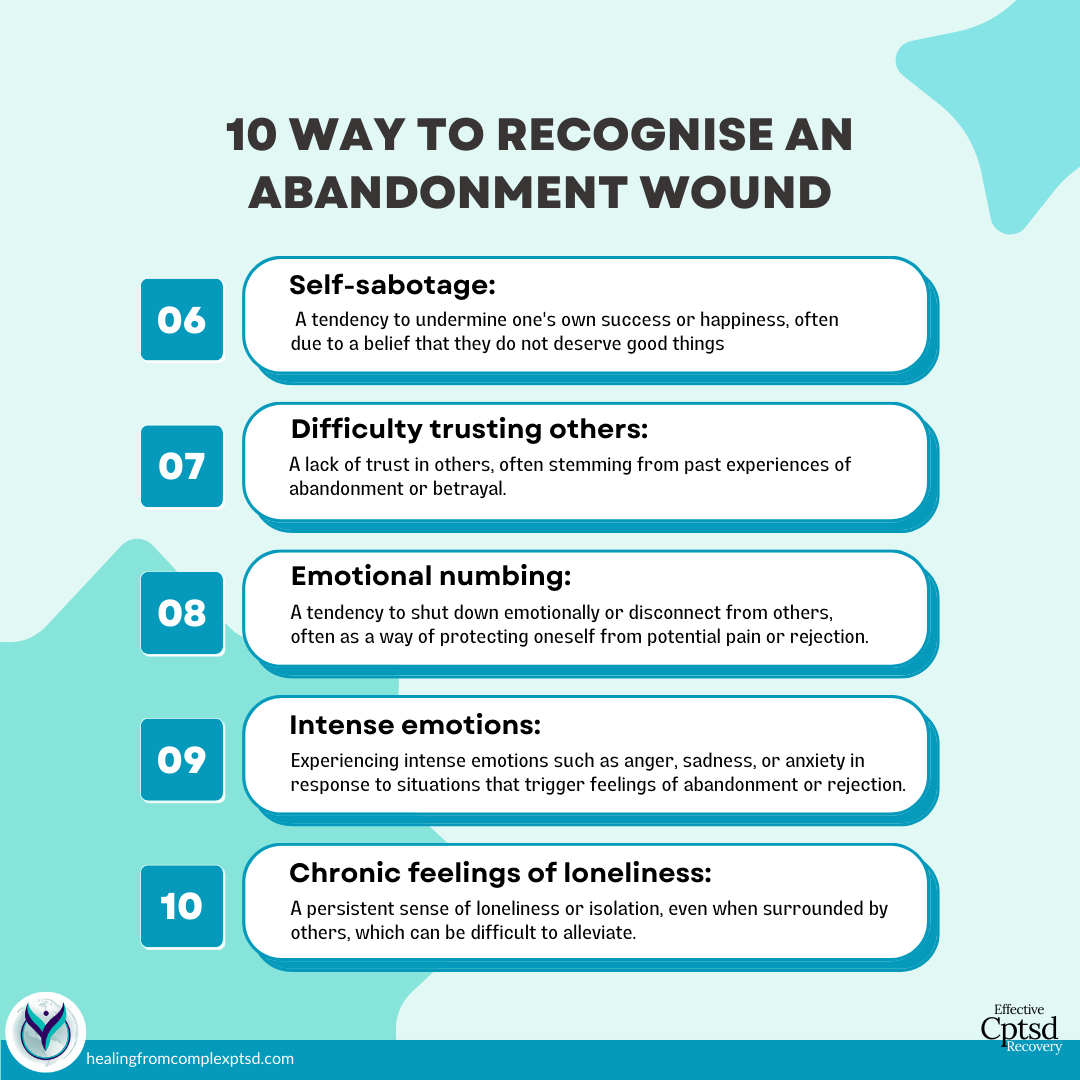
Self Abandonment The Cycle
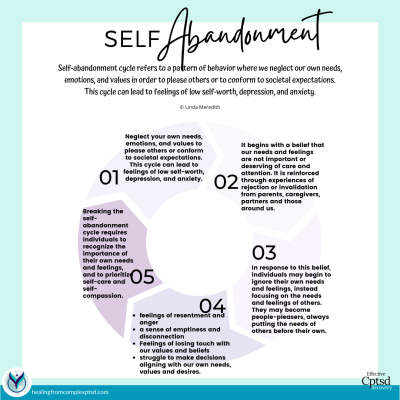
Signs of Self Abandonment
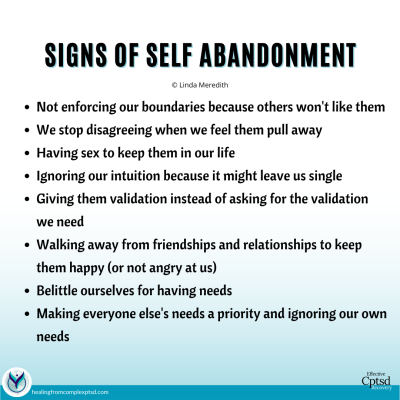
Definition: Abandonment Wound
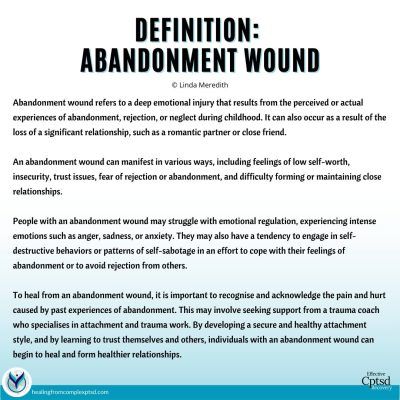
Effective. | Trauma. | Recovery. | Found Here.
Learn more about complex trauma recovery coaching with Linda. For those taking a proactive approach to recovery and needing answers to help heal their whole self.

